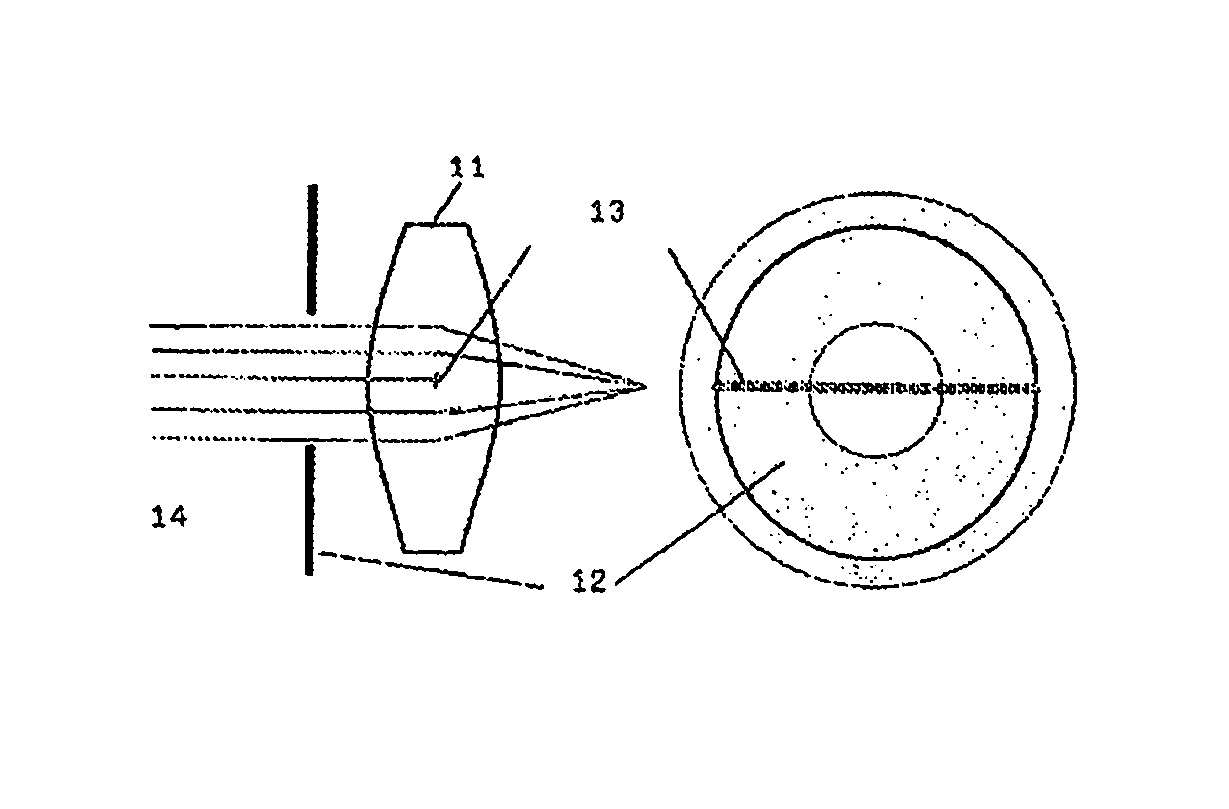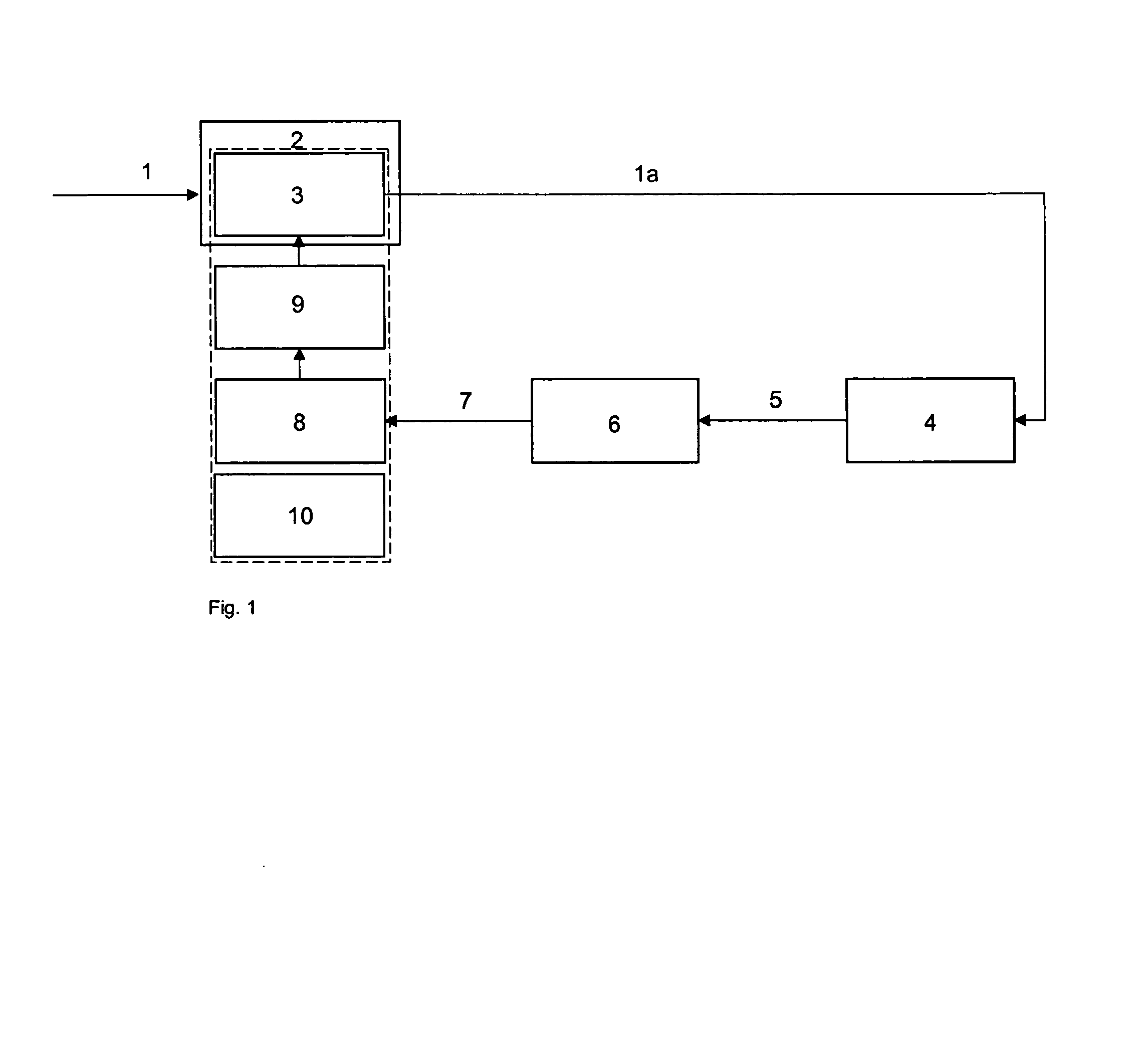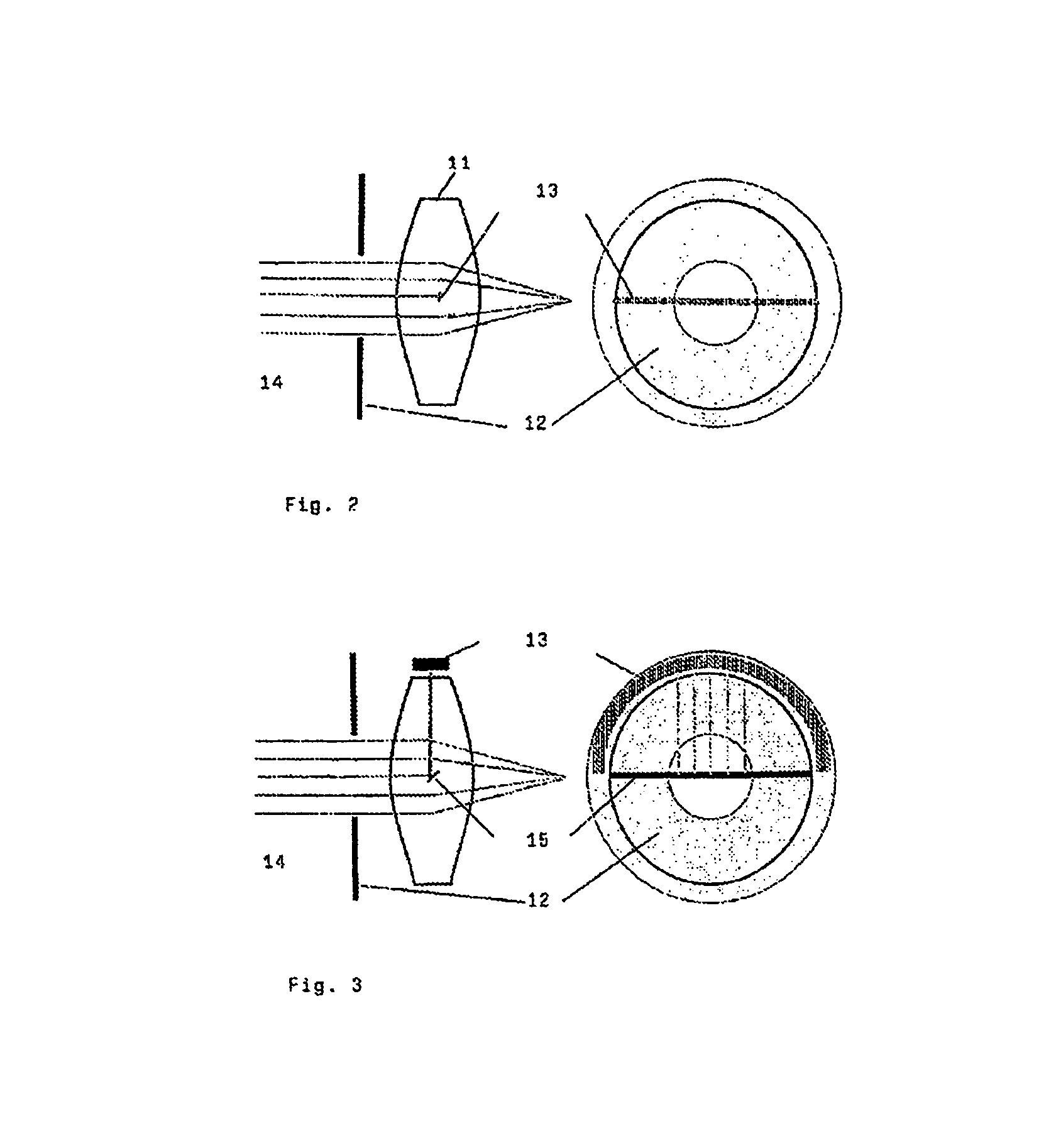Implantable system for determining the accommodation requirement by optical measurement of the pupil diameter and the surrounding luminance
a technology of optical measurement and illumination, applied in the field of implantable systems, can solve the problems of human eye not being able to accommodate adequately, previous attempts to mechanically change the refraction of implantable systems using intraocular structures, in particular ciliary muscle activity, have been unsuccessful, etc., and achieve the effect of increasing the accommodation requirement and increasing the surrounding luminan
- Summary
- Abstract
- Description
- Claims
- Application Information
AI Technical Summary
Benefits of technology
Problems solved by technology
Method used
Image
Examples
Embodiment Construction
[0058]In the following text, the invention is described in more detail with reference to the figures.
[0059]FIG. 1 reproduces a schematic illustration of the overall system (artificial accommodation system). The data 1, e.g. light from an object whose object distance varies over time, passes through the dioptric apparatus of the human eye 2, which comprises the optical system 3. The focused light 1a impinges on the natural sensor—the retina 4.
[0060]The afferent signals 5 generated by the photoreceptors are supplied to the natural data processing system 6—the brain. From there, efferent signals 7 comprising data regarding the accommodation requirement are sent to motor-driven structures (e.g. the iris muscle, ciliary muscles, bulbus muscles). This data is picked up by the data acquisition system 8 of the artificial accommodation system. The data processing system 9 uses this to derive actuation signals for the optical system 3. Hence, the artificial accommodation system matches the di...
PUM
 Login to View More
Login to View More Abstract
Description
Claims
Application Information
 Login to View More
Login to View More - R&D
- Intellectual Property
- Life Sciences
- Materials
- Tech Scout
- Unparalleled Data Quality
- Higher Quality Content
- 60% Fewer Hallucinations
Browse by: Latest US Patents, China's latest patents, Technical Efficacy Thesaurus, Application Domain, Technology Topic, Popular Technical Reports.
© 2025 PatSnap. All rights reserved.Legal|Privacy policy|Modern Slavery Act Transparency Statement|Sitemap|About US| Contact US: help@patsnap.com



